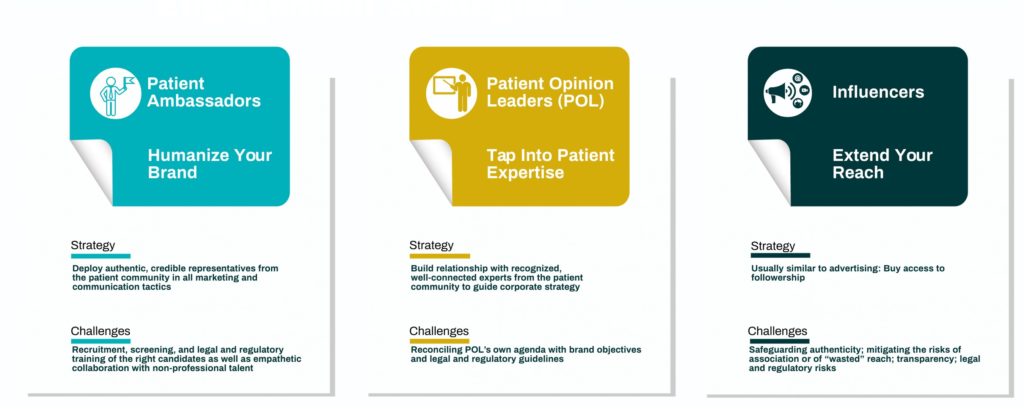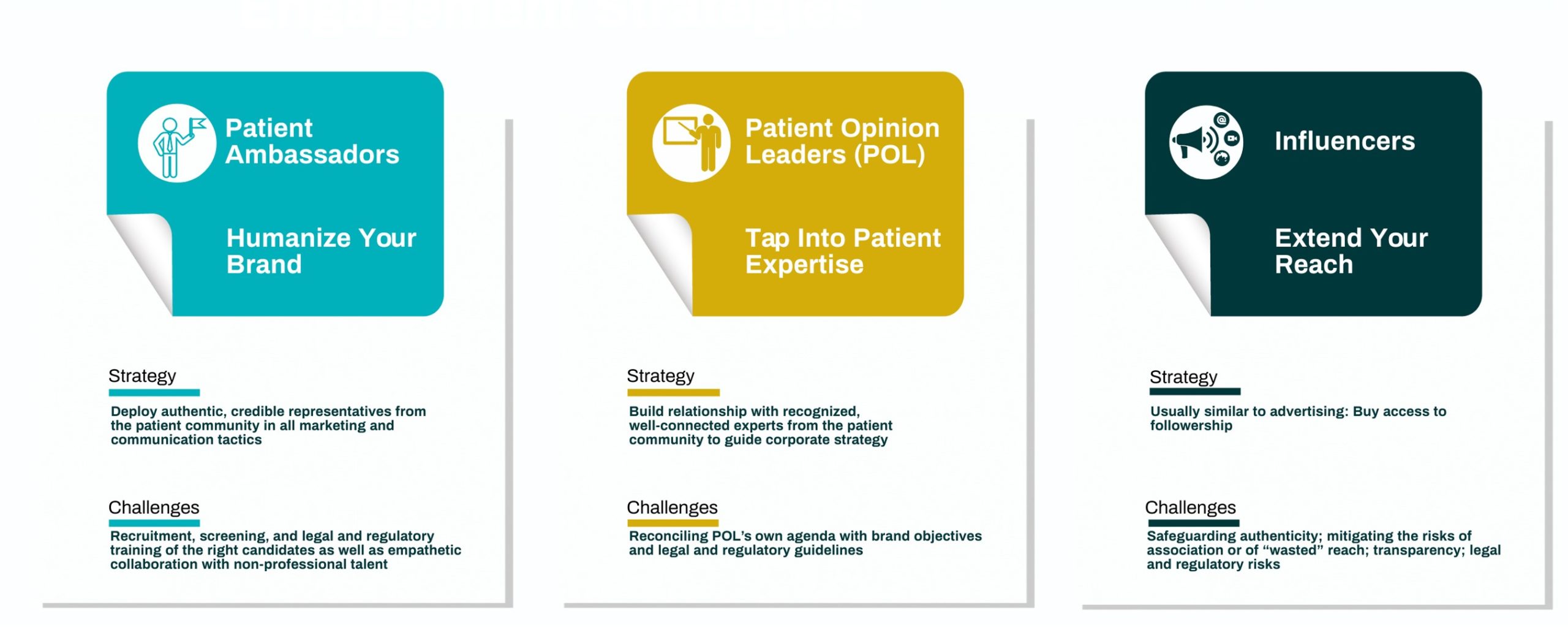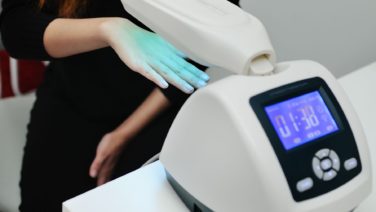For life science companies, working with patients has become industry standard. Patient engagement has evolved from a little-known niche into a specialized field in its own right. However, patient engagement can mean many things at different companies such as patient advocacy, DTC/DTP marketing, and even patient-driven clinical trial design. For the purpose of this discussion, we look to focus on defining three key opportunities to connect and partner with individual patients to support your brand strategy (see Figure 1).
 The definition of many terms commonly used in the patient engagement discourse can sometimes be a little murky. However, when it comes to connecting with individuals outside of your own organization, we can easily and clearly distinguish three general types of engagement that are worth exploring.
The definition of many terms commonly used in the patient engagement discourse can sometimes be a little murky. However, when it comes to connecting with individuals outside of your own organization, we can easily and clearly distinguish three general types of engagement that are worth exploring.
Patient Ambassadors
A participant in a Patient Ambassador® program is a representative of the “everyday patient” living with a specific condition, often taking a specific product. It’s people who are associated with the company that conducts the program—an extension of that company that reaches into the community. They share the company’s values and are aligned with its goals. Their role is to bring a company’s products, services, or programs to life. They’re the human manifestation, the face, of the condition, or the brand they represent. Some companies use “patient advocate” to denote a “Patient Ambassador,” but we reserve those expressions for the advocacy relations or the individual patient engagement space, respectively.
From a strategic and tactical perspective, Patient Ambassadors are featured as the authentic representatives of the brand or the condition on brand.com websites, on patient testimonial videos, on print materials, and of course, as speakers at live events. A lot of times, Patient Ambassadors also collaborate on internal initiatives in support of a patient-centric corporate culture. Finally, they sometimes act as patient mentors, as patients or caregivers who offer their time, support, and experience to other patients or caregivers in 1:1 settings, most commonly over the phone. In order to safeguard the brand, this type of engagement calls for partners that specialize in recruitment, screening, and training of candidates from a logistical and legal and regulatory point of view.
Patient Opinion leaders (POLs)
Just like physician Key Opinion Leaders (KOLs), POLs are voices of competence on their topic of expertise—the disease they live with or their loved-one lives with. POLs are panelists or keynote speakers at conferences; they publish opinion-leader pieces; they sit on the board or are otherwise heavily involved with patient advocacy organizations; and they blog and engage their readership on social media. What distinguishes them from other types of social media influencers is the reputation they’ve earned over the years of representing their community with a solid foundation of knowledge, experience, and connectedness.
Life sciences companies are interested in POLs, as they have acquired a deep understanding of the medical and human challenges patients like themselves face. A POL knows the market landscape and is well informed about treatment products. That makes them ideal candidates for a steering committee to help guide a company’s strategy. They may also be a conduit to building stronger advocacy relationships. Their allegiance is with many companies and organizations, so they are best suited as strategic advisors and wouldn’t ordinarily be considered as the face of a brand. Nonetheless, due to the weight a POL’s voice carries within the patient community, it is critical that the relationship is handled with utmost care—and that external partners have a track record of sustaining positive attitudes among POLs throughout the entire product lifecycle.
Influencers
Another type of external engagement that some biopharma companies like to use is that of influencer marketing. Influencers can be celebrities or everyday people with a sizeable social media following. Social media influencers qualify themselves by virtue of their online followership, celebrities by virtue of their fame, and in this day-and-age, many influencers actually fall into both buckets. Influencers can also be patients or caregivers in a given disease category, but that’s not necessarily the case and definitely not their main claim to fame (if it were, they’d be POLs). Influencer marketing is in many ways analogous to buying an ad; the influencer will provide space for marketing or awareness messaging in return for compensation. Within their blog or social media channel however, the health topic will, for the most part, take a backseat next to the main “thing” they tend to communicate with their followers about.
Influencers can dramatically increase a brand’s reach, but there is always a risk inherent in aligning oneself with an individual whose views and opinions may cause controversy. The other challenge is that among the influencer’s audience, only a minute fraction may be affected by the condition in question, and finally, there is a risk that the branded or disease awareness messaging comes across as artificial and insincere. That’s not to say that this strategy is without merits. But the value of this path depends on the goals and objectives of what the campaign is supposed to do. Before you do it, make sure your team understands the impact of different strategies and the legal and regulatory ramifications around them.
Define the Ideal Formula
Whether they’re orphan disease products or competitive blockbuster drugs, brands have to define the ideal formula of different patient engagement strategies to suit their needs. In any case, success hinges on partners who can guide the brand team through the strategy process and who can implement the legal, regulatory, and compliance safeguards. It takes specialized experience and infrastructure to navigate this complex field. It’s safer for the brand, and it’s better for the patients.








